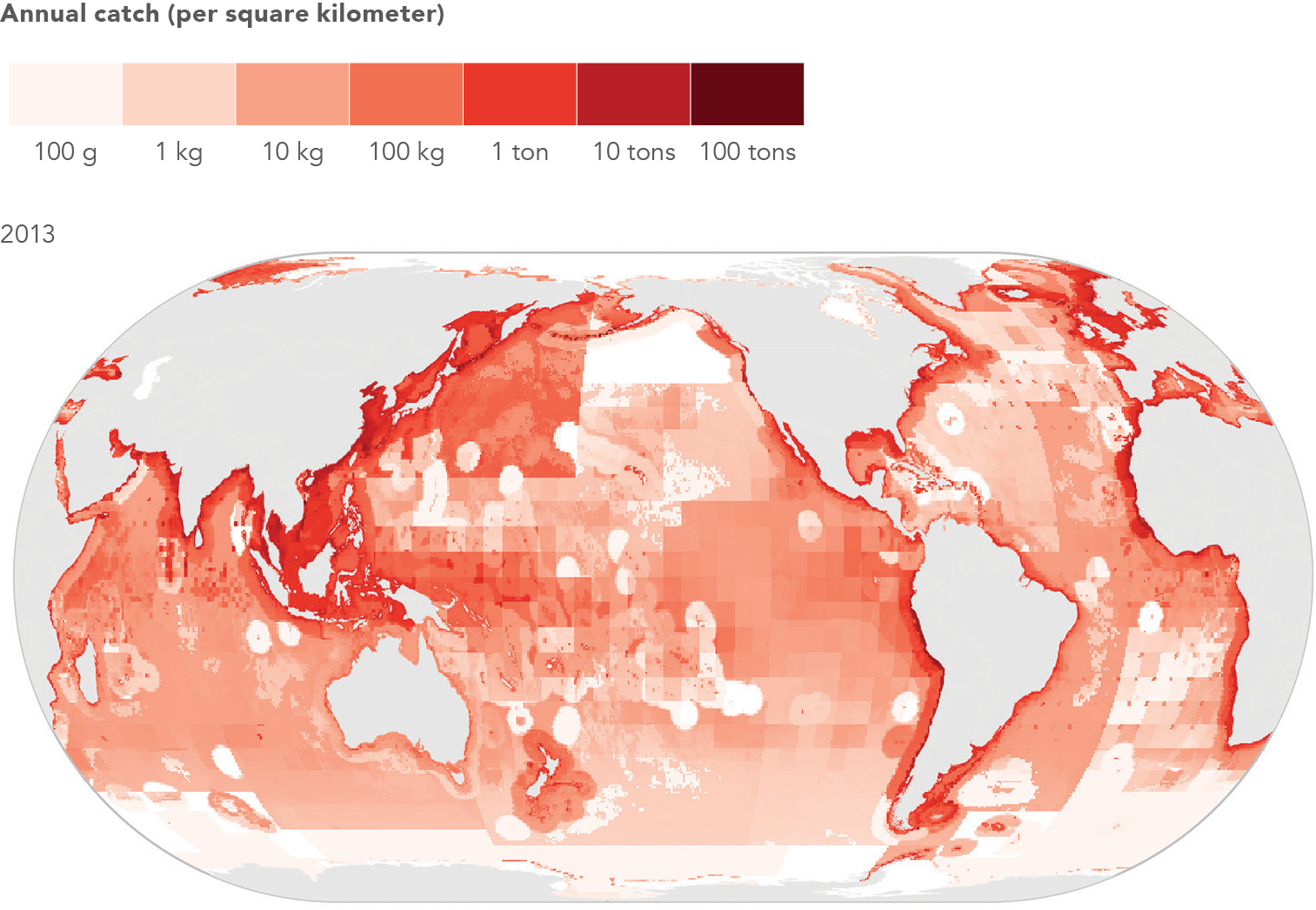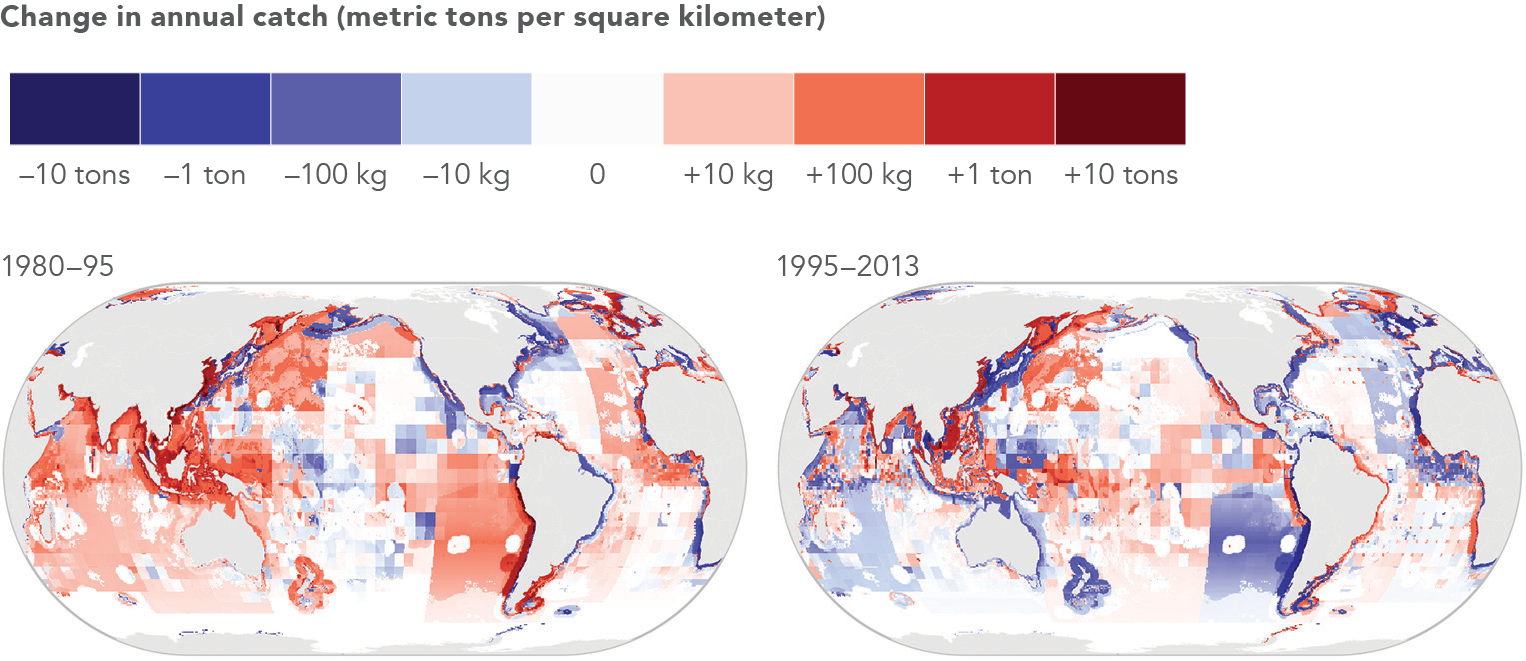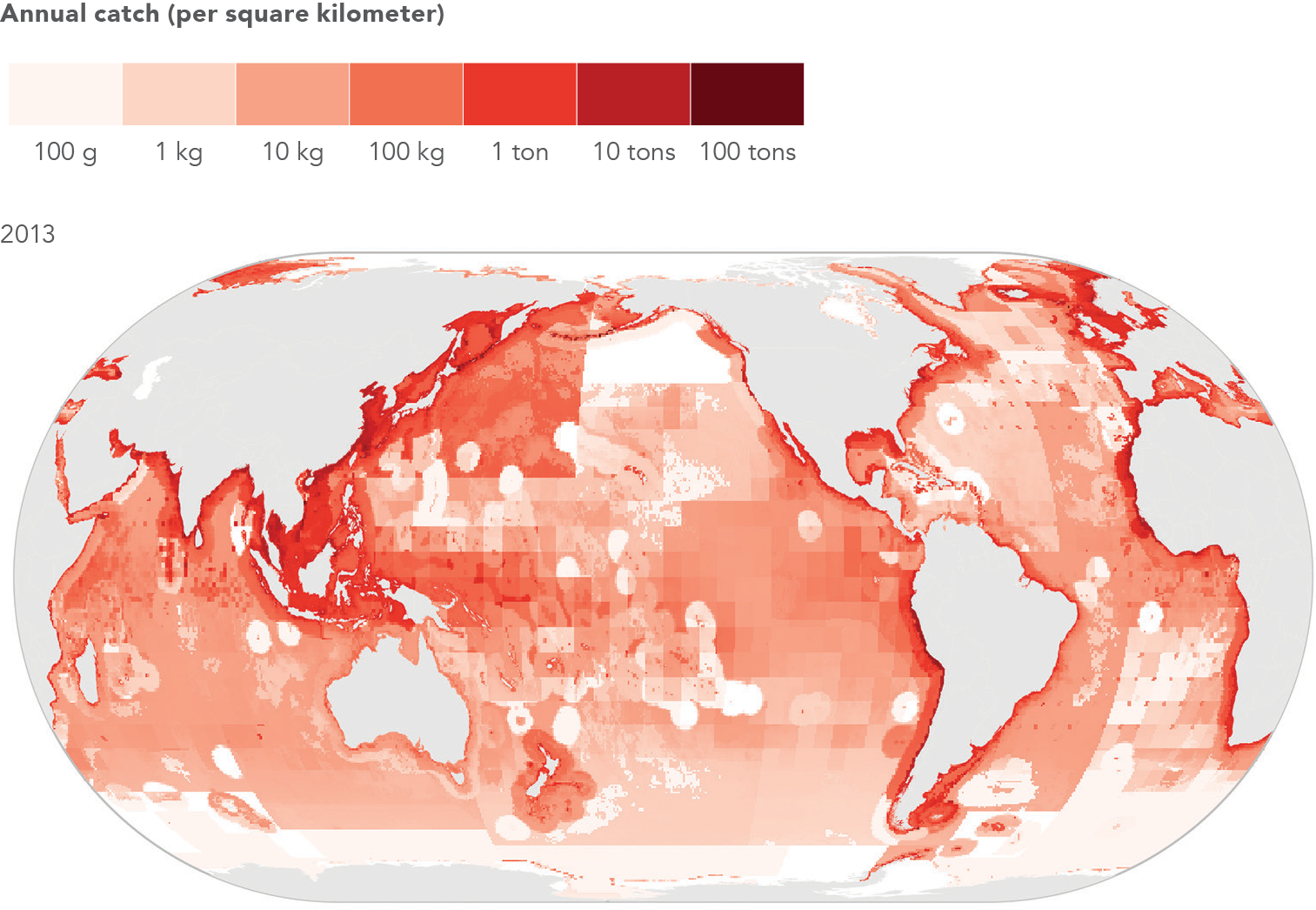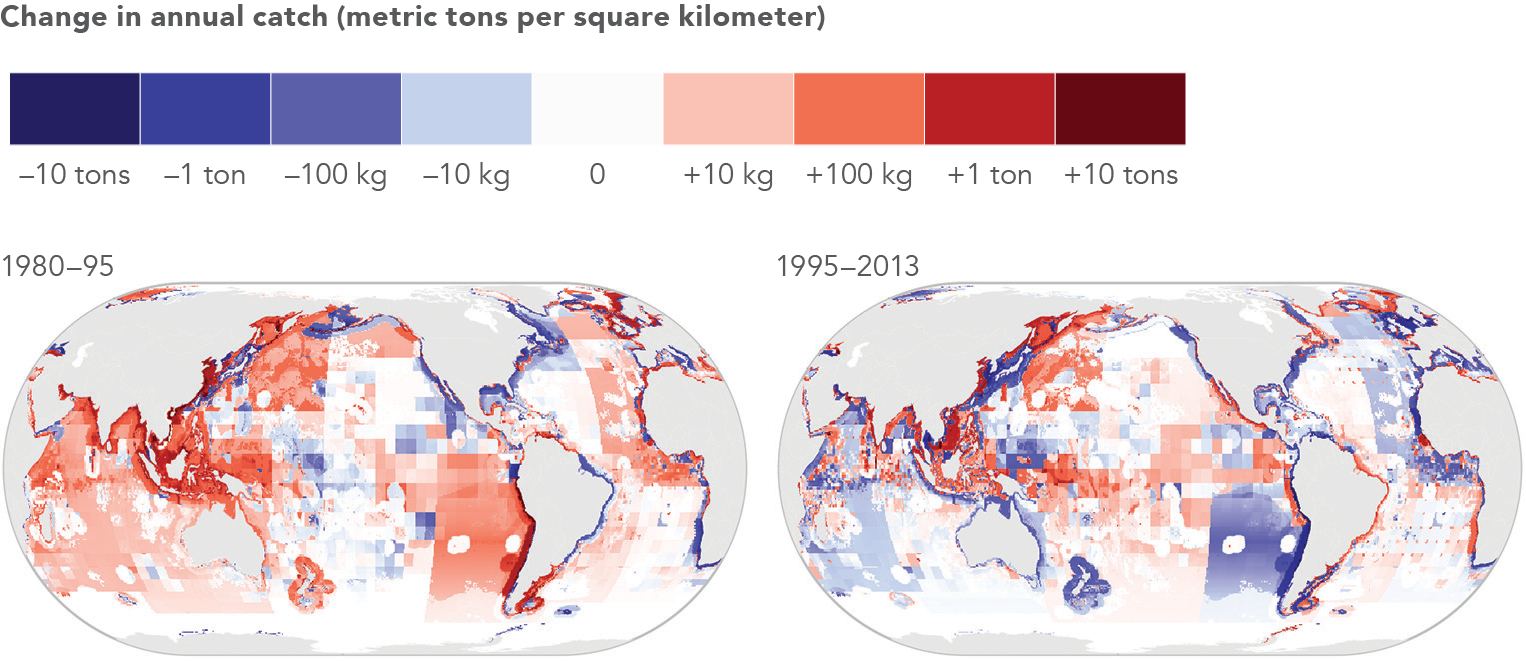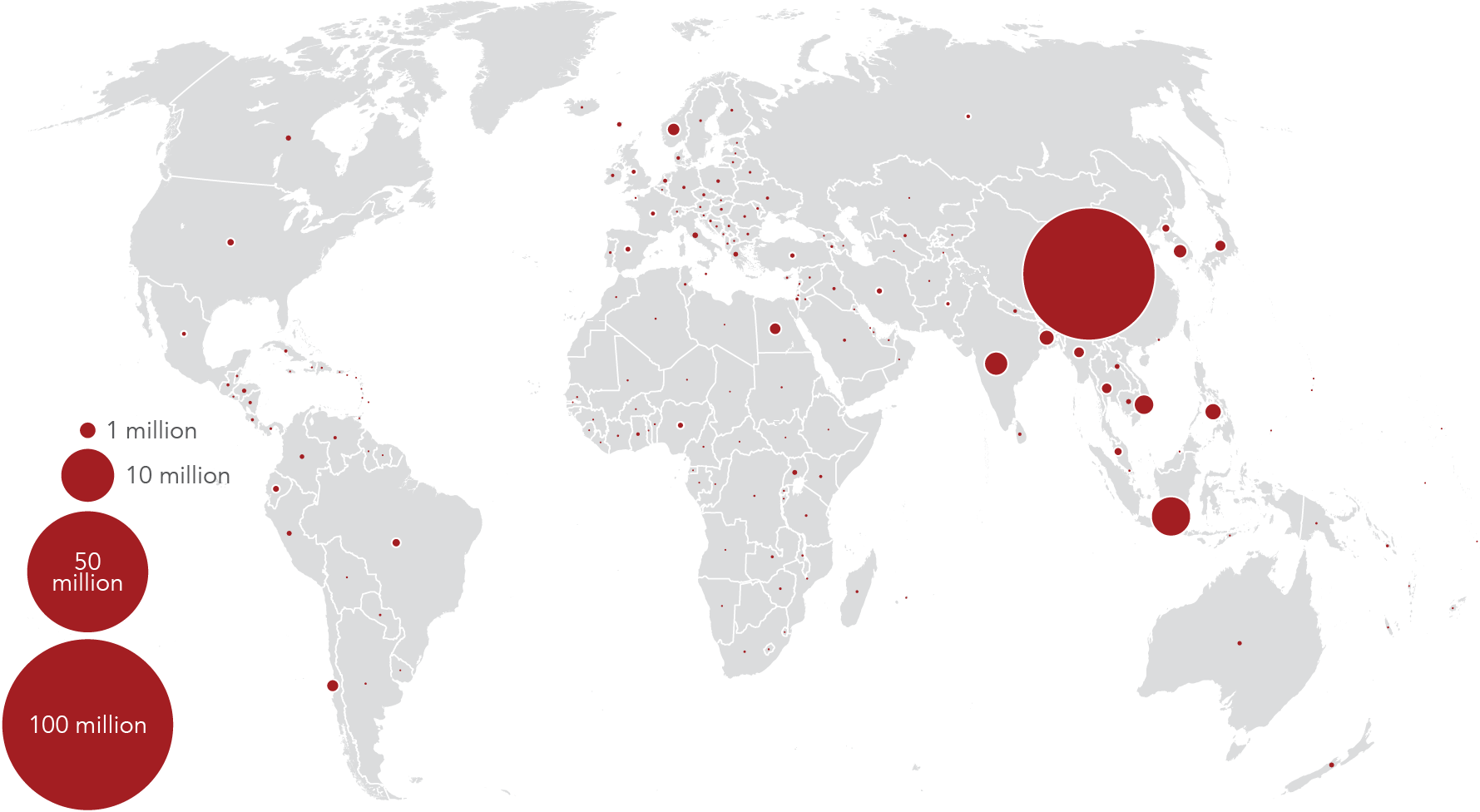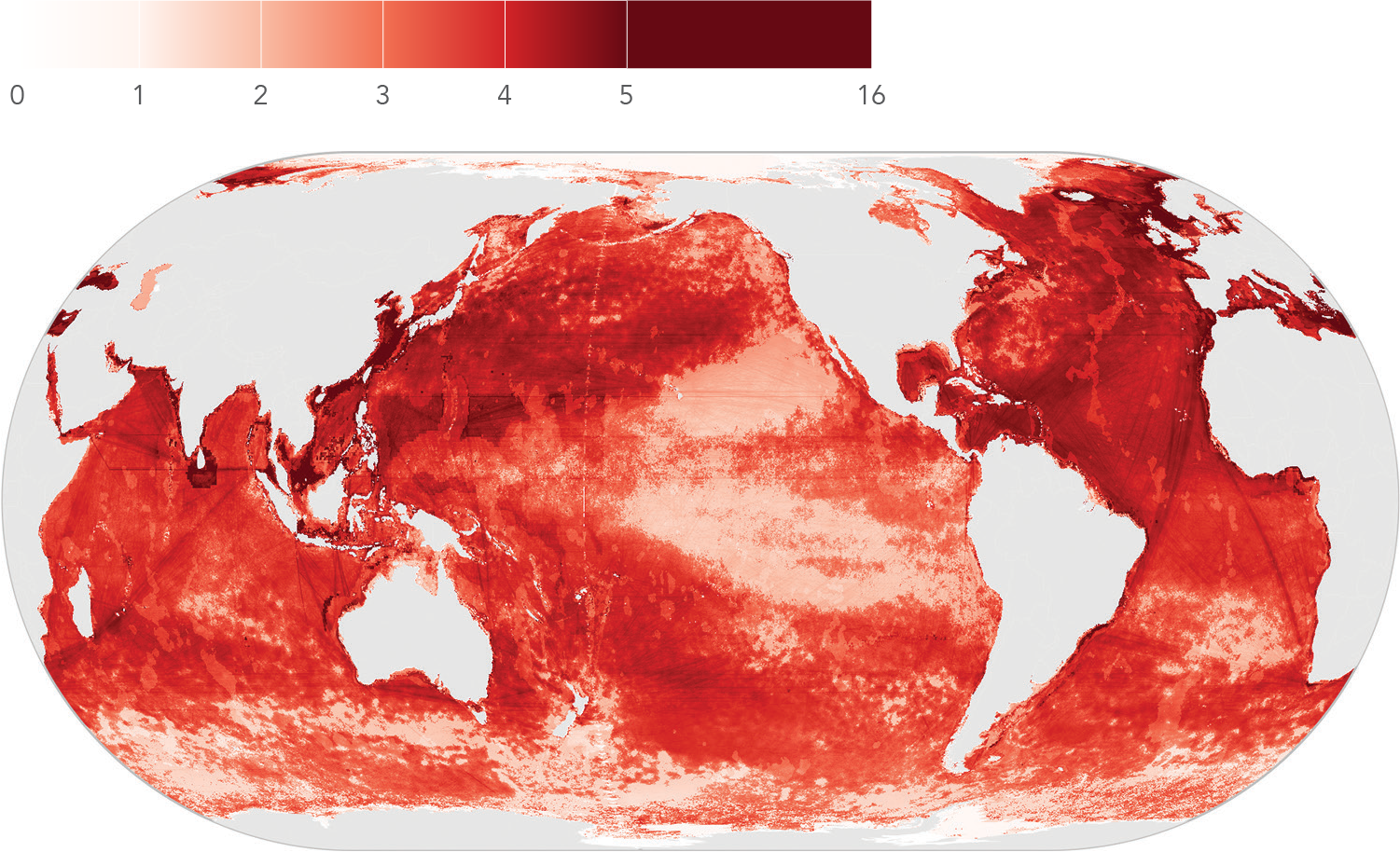Preserving fish stocks for future generations
Driven by rising populations, higher incomes, and greater awareness of seafood's health benefits, the demand for fish is twice the estimated supply of sustainably caught wild fish.1 Data deficiencies continue to hamper analysis, but aggregates based on data that governments report to the Food and Agriculture Organization (FAO) and estimates of under- reporting indicate that total fish catches are declining worldwide (figure 14a).
Goal 14 aims to rapidly rebuild sustainable fish stocks (target 14.4). According to FAO, the proportion of overfished stocks has been increasing over the last four decades.2
The situation is worst in low-income and middle-income countries, where weak regulation and enforcement have produced above-average declines. Illegal fishing constitutes an additional challenge, as it accounts for around 20 percent of the global catch, undermining the efforts of both small and large fishing enterprises to implement sustainable fishing regimes and making it harder for well-managed fisheries to compete in international markets by undercutting fair pricing.3
An additional challenge is that global fisheries continue to forgo substantial economic benefits each year due to poor management. And even if the most drastic measures to reduce fishing were implemented globally, it would still take up to 20 years for the overexploited stocks to recover and for global fisheries to be sustainable. The cost of delayed action, compared with accelerated reform, is more than $500 billion.5
Eliminating subsidies
Goal 14 supports ocean well-being through the elimination of subsidies that encourage overcapacity and overfishing (target 14.6). Globally, these subsidies, about $10 billion annually and mainly directed to sea fisheries, drive continued fishing despite declining catch values and profits (figures 14b and 14c).4
Meeting more demand through aquaculture
As capture fisheries struggle with overcapacity and weak regulatory frameworks, aquaculture has been steadily increasing output to meet rising consumer demand. Aquaculture now provides half the global seafood supply, with China the leading producer (58 percent of total), followed by Indonesia, India, and Vietnam (figure 14e).
Supporting livelihoods
About 61 percent of global gross national product is produced within 100 km of oceans.6 Goal 14 seeks to increase economic benefits to producers from the sustainable use of marine resources, particularly for producers in small states and lower income economies (target 14.7). About 11 percent of the world's people rely on fisheries and aquaculture as the main source of income, and more than 90 percent of them work in capture fisheries in small enterprises in low- and middle-income countries.7
FAO data from 2014 indicate that 56.6 million people were engaged in capture fishing and aquaculture in 2014. Over the last decade employment in the sector decreased, almost entirely due to a decrease of approximately 1.5 million fishers, while the number of fish farmers was stable.8
Reducing ocean pollution
Marine biodiversity and the global environment are closely connected with ocean pollution and acidification.
Restricting human activities in marine protected areas helps preserve coastal and shoreline ecosystems (target 14.5).9 If properly enforced, these measures can help rebuild depleted stocks and act as sanctuaries for biodiversity. In 2014 low-income countries had just 3.5 percent of their territorial waters under a protected designation, and high-income countries about 24 percent.
About two-thirds of the ocean area presented evidence of increased human impact in 2013, compared with 2008.10 The cumulative impact encompasses effects of commercial fishing, climate change, and other ocean and land-based factors. Highly affected areas are places where nearly all pressures converge, as in the North Sea and the South and East China Seas (figure 14f). An overwhelming share of the global ocean (98 percent) is affected by multiple factors, including higher than normal sea surface temperatures, ocean acidification, and high ultraviolet radiation.11
Increasing CO2 concentrations in the atmosphere increase the acidity of the oceans, compromising marine life by making shell formation more difficult. Since the industrial revolution, surface ocean acidity has increased by 30 percent, threatening the multibillion-dollar shellfish industry and the marine ecosystems that depend on clams, oysters, and mussels for water filtration.
Data challenges
Globally, data on fishing and fish stocks are insufficient to support proper management. While stock status is fairly well known in industrialized countries, 80 percent of captures are in countries with little systematic fisheries data collection mechanism, and status is often little more than an educated guess.12 A concerted national and international effort is needed to collect, analyze, and interpret fishing data for policymaking.
Notes
- Netherlands Environmental Assessment Agency. 2010. Rethinking Global Biodiversity Strategies: Exploring Structural Changes in Production and Consumption to Reduce Biodiversity Loss. The Hague, Netherlands.
-
Food and Agriculture Organization. 2016. The State of World Fisheries and Aquaculture 2016: Contributing to food security and nutrition for all. Rome.
-
Trends in regional estimates of illegal fishing, averaged over five-year periods from 1980 to 2003. Agnew, D. J., J. Pearce, G. Pramod, T. Peatman, R. Watson, and others. 2009. "Estimating the Worldwide Extent of Illegal Fishing." PLoS ONE 4(2): e4570.
-
World Bank. 2009. The Sunken Billions: The Economic Justification for Fisheries Reform. Washington, DC.
-
World Bank. 2015. The Sunken Billions Revisited: Progress and Challenges in Global Marine Fisheries. Preliminary results from the forthcoming World Bank study. Washington, DC.
- http://www.worldbank.org/en/topic/environment/brief/oceans.
-
Food and Agriculture Organization. 2014. The State of World Fisheries and Aquaculture 2014: Opportunities and challenges. Rome.
-
FAO 2016 (see endnote 2).
-
World Bank. 2012. "Marine Protected Areas Vital to Restoring Biodiversity." Washington, DC.
-
Halpern, B., M. Frazier, J. Potapenko, K. Casey, K. Koenig, C. Longo, J. Lowndes, R. Rockwood, E. Selig, K. Selkoe, and S. Walbridge. 2015. "Spatial and Temporal Changes in Cumulative Human Impacts on the World's Ocean." Nature Communications 6: 7615.
-
Brummett, R. 2013. Growing Aquaculture in Sustainable Ecosystems. Agriculture and Environmental Services Note, No. 5. Washington, DC: World Bank.
-
Costello, C., D. Ovando, R. Hilborn, S. D. Gaines, O. Deschenes, and S. E. Lester. 2012. "Status and Solutions for the World's Unassessed Fisheries." Science 338(6106): 517–20.

